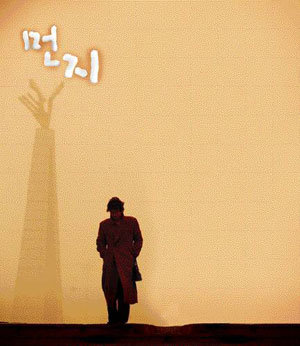"Nobody Will Again Look Disparagingly upon Dust"
"Nobody Will Again Look Disparagingly upon Dust"
Posted September. 15, 2007 05:06,

What do a space rock, tree bark, an ants leg, a dinosaurs bone, a scrap of tire, and bacteria have in common? They all can be reduced to dust.
Dust counts for nothing and is deemed as something to be removed. Except for fine dust that causes various respiratory diseases, few will bother to discuss dust.
The newly released book, Dust (whose original title is The Secret Life of Dust was published in 2001), however, gives comprehensive information about dust. Though the book is classified as natural science, the authors witty and easy explanations make it an easy read. It reads like a well-made documentary.
Hannah Holmes, the author of the book, is a professional writer and columnist specializing in science and natural history. Holmes columns are carried in several newspapers including the NY Times. Though Holmes did not major in science, she is acclaimed as a popular science writer equipped with both theory and a strong writing ability.
In fact, dust is one of the main research subjects among many scientists including meteorologists and immunologists. Dust goes up into the air and spreads throughout the globe. One can know the Rocky Mountains are now eroding due to traveling dust coming from the mountains without ever visiting there. One can also learn that volcanoes are erupting in the Philippines though he or she is not there. Dust we casually wipe away has a tremendous power to not only change weather conditions and climate but also transform land, sea, and even our lungs, according to the author.
Nature produces big dust. Pollen in the air is big enough to stick in the nasal cavity. Natural dust is bigger than 10 microns (one centimeter is equal to 10,000 microns). Dangerous dust is smaller than natural dust and causes trouble. Mercury, lead, dioxin, polychlorobiphenyl, and radioactivity are considered to be dangerous dust. They pass through our protective mechanisms and make their way into lungs, giving rise to diseases.
Though some dust is indeed harmful, just as we cannot live without air, we cannot sustain our lives without dust. The author states that a world that is too pure will be stifling and sweltering. She illustrates this point by explaining that vapor needs dust when it condensates since it gathers on the small surface of dust. Without dust, vapor does not condensate until the relative humidity reaches 300 percent. Clouds would then dissipate and scorching heat waves would raid the Earth.
The heftiest virtue of the book lies in the fact that it is full of comparisons which readers are familiar with, helping them grasp the content with ease. Furthermore, the authors tactful explanations turn boring science into an interesting story. The following is part of the story that shows her genius.
Every year, dust in the desert that weighs one to three billion tons flies up into the air. Ten tons of dust is the equivalent to an amount that could fill a freight train with 14 million carts. The train is long enough to round the Earth six times Have you ever walked the summer beach with bare feet? Sand is hotter than the atmosphere. Likewise, hot sand and dust particles in the air are like a radiator that emits heat into the air and to humans. A dust storm is a cruel monster that could dehydrate all the creatures on the Earth.
She also inserted many amusing examples that show the power of dust. Fossils of Oviraptor, a small Mongolian theropod dinosaur, were discovered in the Gobi Desert in Mongolia. The bird-like dinosaur was trapped in its nest, making it a perfect fossil in a squatting position. The author said, What buried it so swiftly that it could not escape, trapping it deep in the nest? It was a mysterious murder that happened in the remote past. Dust is a suspect.
An ordinary science writer would explain the later part in a way such as, In ancient times, there was humidity in the Gobi Desert. Crustal movements eliminated humidity, which ending up creating a desert and producing dust. A dust storm buried the dinosaur. However, the author of the book effectively creates a science fiction-like novel. With compassion, she explained the crisis facing Oviraptor. While Oviraptor was lost in reverie, a salt crystal in the air fell on the pebble ground made of limestone As winds dissipated, dust was whirling over Oviraptor.
After she delivers a scientific explanation that the yellow dust that plagues us every spring is attributed to reckless economic development, she added the following that allows us to see yellow dust from a different perspective: A splendid silk hat a Mongolian shepherd boy used to wear, a peel of rotten wild onion, ash left on the camp fire, a horses bone, and even parts of Genghis Khan body who reined Central Asia might be contained in the yellow dust.
According to the book, the past and the future is all in the dust. To make a comparison, dust is time. We will also become dust and travel in the air, crossing borders. We will return to the soil, and be eroded, breaking into pieces over hundreds of years or millions of years, she said. Who knew that a particle of an ancestor who passed away hundreds away is drifting around us? One will never again look disparagingly upon dust.
zeitung@donga.com



![가습기 대신 젖은 빨래?…폐에 ‘곰팡이 균’ 키운다 [알쓸톡]](https://dimg.donga.com/c/138/175/90/1/wps/NEWS/IMAGE/2026/01/02/133040702.3.png)



